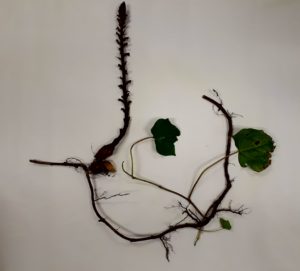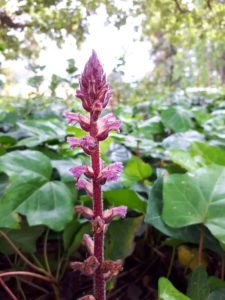The natural history of host-associated microbiota
“… almost everything about larger organisms has been shaped by their history of evolving from, then with, microorganisms.”
Moran and Sloan 2015
The discovery that plants and animals harbor unique microbiota is transforming the way we think about life on Earth. How these microbial communities are shaped by, and contribute to, the diverse ecologies among plants and animals is an important objective for host-microbiome research. In addition to controlled experiments, increasing insight into both the assembly and importance of host microbiota requires investigation of plants and animals that occupy diverse ecological niches. Plus, studying nature’s oddballs makes for excellent natural history stories of the microbes associated with: salt-secreting plants; agaves; bone-eating snails; hibernating bears; whale blow; dung beetles.
• The microbiota of a parasitic plant and its host
The transition from autotrophy to heterotrophy exhibited by parasitic plants represents one of the most dramatic niche shifts undergone by plants. Resource acquisition from host plants occurs through mycorrhizal fungi (mycoheterotrophy), or directly through specialized parasitic organs called haustoria. The haustorium attaches to the root or stem vasculature of host plants and acts as a conduit through which material is exchanged between host and parasite. Unsurprisingly, this life-history shift has been accompanied by dramatic ecological and physiological shifts, as well as morphological and genomic changes collectively referred to as ‘parasitic reduction syndrome’. For example, root parasites exhibit vestigial, scale-like leaves and a loss of a developed root system (see below). Thus, parasitic plants present a unique opportunity to investigate how the composition and assembly of plant-associated microbiota are shaped by, and contribute to a dramatic ecological shift. In this project Adam Schneider and I investigated the leaf and root bacterial communities associated with the root parasite Orobanche hederae and infected and uninfected host plants, Hedera spp.
Publications:
Fitzpatrick CR, Schneider AC. Bacterial dynamics during parasitic plant infection. 2019. In Review.


• Bacterial dynamics in the gut of a eusocial mammal
Social animals present a unique opportunity to study the interplay between host-microbiomes and social phenotype. Work with primates has shown that social contact between individuals is correlated with the compositional similarity of their gut microbiota. However, our understanding of how the various roles that individuals have within a society impact the diversity and composition of associated microbial communities is limited. Social insects including ants, termites, and honeybees exhibit role-specific differences in gut microbial community composition. Whether these results extend to social mammalian species is unknown.
In a super fun collaboration with Ilapreet Toor (PhD candidate University of Toronto) and Melissa Holmes, we used the naked mole rat, Heterocephalus glaber, a eusocial mammal, to examine the relationship between social role and gut microbiome. H. glaber exhibits a rigid social structure divided into distinct roles within underground colonies of between 60-80 individuals. Reproduction is limited to a single female (queen) and 1-3 males (breeding males), the rest of the colony – called subordinates -performs a number of duties including nest maintenance, litter care, and foraging (workers), and defense from non-colony animals (soldiers). Workers are highly affiliative and prosocial whereas soldiers are aggressive to unfamiliar conspecifics. Remarkably, very few morphological differences exist between non-breeding animals of the opposite sex. In contrast, animals from different social roles exhibit large differences in neural anatomy and endocrine function that are shaped by individual social experiences rather than genetic differences. However, when non-breeding animals are isolated they rapidly transition from their previous social role, either soldier or worker, to a reproductively active animal, either queen or breeding male. Studying the gut microbiome across social roles, in addition to tracking gut microbial changes occurring as individuals transition between roles, will provide the first insight into how mammalian social structure shapes, and is potentially shaped by, the gut microbiome. Sequences are on the way, stay tuned for results!

